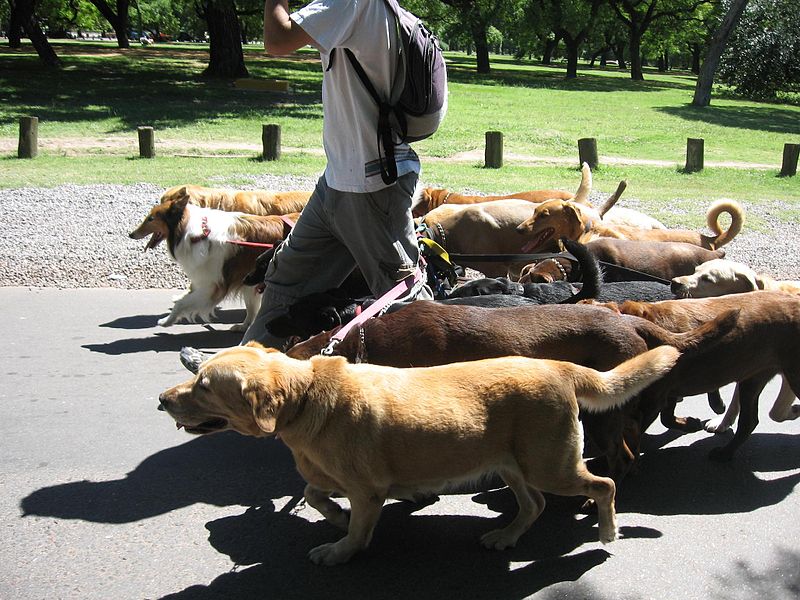AARP Eye Center
How Professional Dog Walking Got Its Start
By Patrick Kiger, July 15, 2013 11:41 AM

In 1964, then New York Times reporter and later book author Gay Talese wrote a short profile of a man who had embarked on what seemed like a unique, exotic profession. Jim Buck walked other people's dogs - 30 or 4o of them a day - while their owners were at work.
Talese marveled at how Buck - a slender 145 pounds at six feet in height - managed a 150-pound Great Dane, a pair of Labrador Retrievers, and several other dogs all at once as he navigated Manhattan's Upper East Side, directing them with verbal commands such as "heel left" and "Whoa!" He plied his trade to the continual amusement of onlookers. ("Hook up a sled!" a doorman called out to Buck, in Talese's account.) But Buck laughed along with them; his labors earned him a then-considerable $500 a week, more than five times the average American's salary.
While it's impossible to verify, Buck, who died on July 4 at age 81 in New York City, seems to have been the first recognized professional dog walker in America, a trade that he plied for nearly four decades. Here are some facts about Buck and the now ubiquitous service industry that he helped create:
- Born to a wealthy, socially prominent New York family that made its fortune in steel and shipping, Buck first began working with show dogs as a youth.
- Buck was a non-conformist who skipped college and went to work as vice president of a small electronics firm before finding his true vocation. "I discovered soon enough that I preferred walking [my own dogs] and the neighbors' dogs in Central Park to putting on my tie and getting downtown to the office," he said in a 1965 New Yorker article.
- Buck and his family owned three dogs of their own - two Great Danes, Nimble and Lily, and Lisa, "a five-dollar mixed Foxhound-Springer Spaniel" - and also boarded a beagle named Duke, who was afflicted with chronic tonsillitis.
- Buck told the New Yorker that the secret of successful multiple-dog walking was psychologically analyzing each pack, with an eye to identifying different canine archetypes - the leader, the wing dog, the shy dog, the aggressive dog, and so on - and managing them so they learned to get along, with "each individual moving to realize his best potential."
- As his business grew, Buck recruited a small staff of dog walkers - mostly former equestrians, because he believed that training dogs was similar to training show horses. All but one of his employees were female. "I prefer women as handlers," he told the New Yorker. "For one thing, they're more certain to react compassionately to dogs who act up."
- Buck tested prospective employees by having them walk an Otterhound named Oliver the Artful, who liked to annoy handlers by wedging himself in phone booths and refusing to come out.
- For a time, dog walkers had their own trade organization, the Professional Dog Walkers Association International. In 2007, PDWAI merged with the International Association of Canine Professionals, which also includes groomers, trainers and even veterinarians.
- Entrepreneur magazine reported in 2006 that dog walkers and pet sitters paid 50 million to 60 million visits to American households each year.
Here's a video that explains some of the nuances of professional dog walking.
Photo: Dog walker in Buenos Aires, by Revolution_Ferg via Flickr
Also of Interest
- 11 Things We Didn't Know Last Week
- Amar Bose: He Made Music Sound Better
- Join AARP: Savings, resources and news for your well-being
See the AARP home page for deals, savings tips, trivia and more

















)


















.jpg?crop=true&anchor=13,195&q=80&color=ffffffff&u=lywnjt&w=2008&h=1154)


























